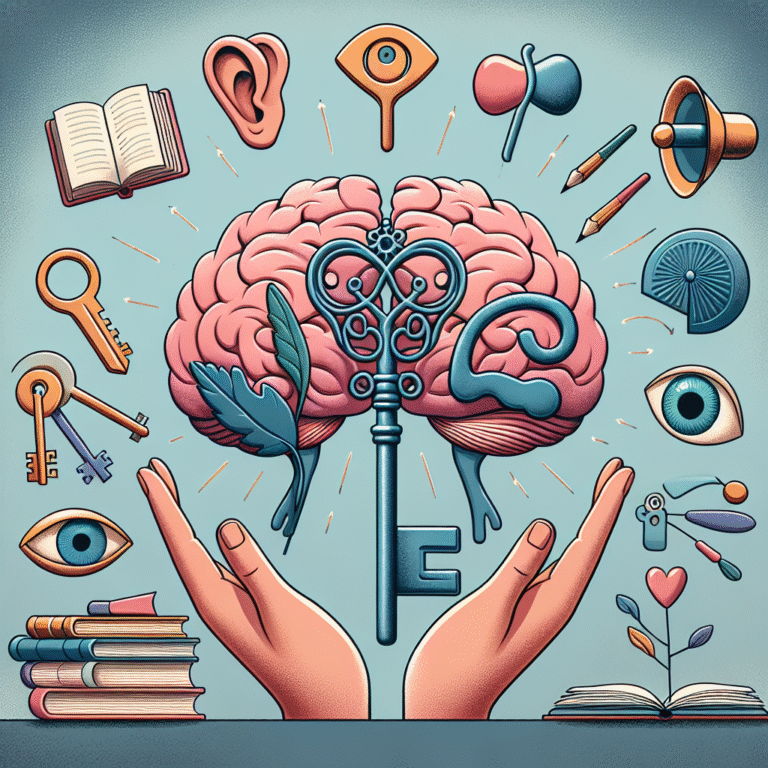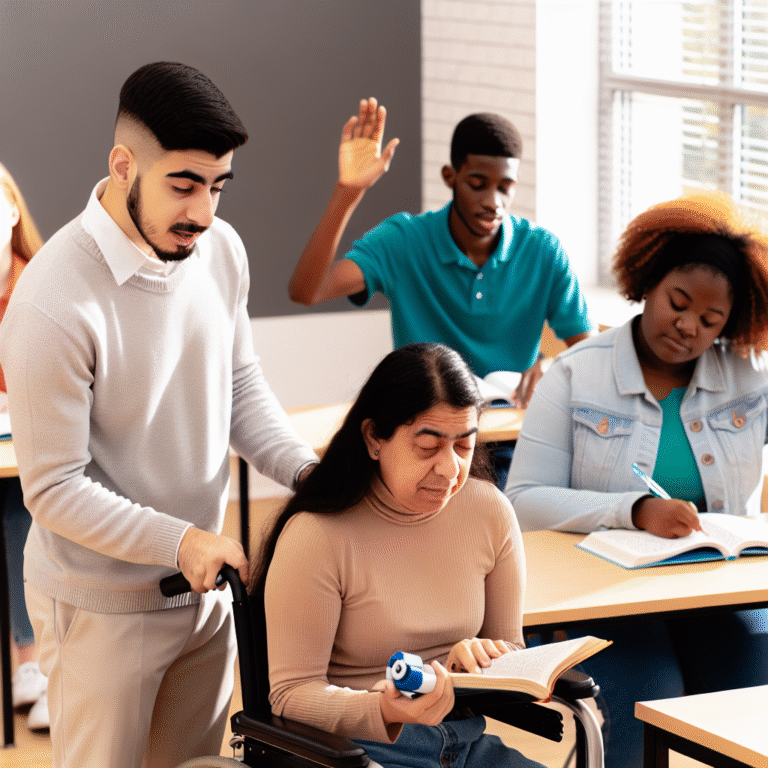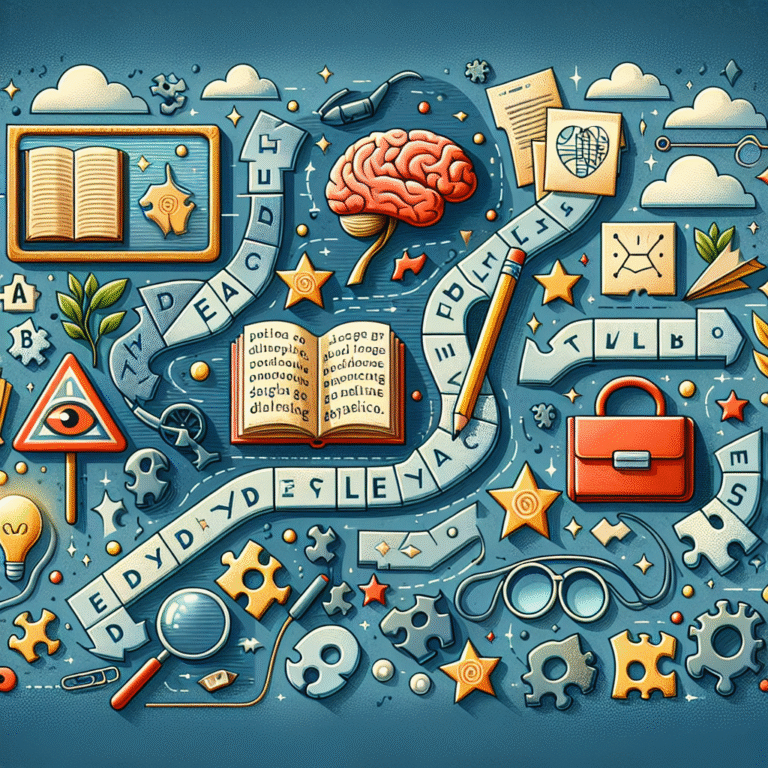
Breaking Barriers: Essential Assistive Technology Tools Making Waves in Inclusive Classrooms
Introduction
In today’s increasingly diverse educational landscape, fostering inclusivity in classrooms has become paramount. As educators strive to create environments where every student can thrive, innovative solutions are necessary to address the unique challenges faced by learners with disabilities. Enter assistive technology—a game-changer that is breaking down barriers and making waves in inclusive classrooms.
Imagine a classroom where every student, regardless of their abilities, has access to tailored learning tools that help them engage, communicate, and succeed. This vision is not merely aspirational but a reality for many thanks to advancements in assistive technology. In this article, we will explore the myriad ways these tools are transforming education, featuring effective applications, inspiring case studies, and practical insights that can empower educators.
Understanding Assistive Technology in Inclusive Education
What is Assistive Technology?
Assistive technology refers to any device, software, or equipment that aids individuals with disabilities in performing functions that might be challenging. Ranging from simple tools like pencil grips to sophisticated software applications that convert text to speech, assistive technology encompasses a wide range of solutions aimed at enhancing learning experiences.
The Importance of Inclusive Classrooms
Inclusive education emphasizes the idea that all students can learn together in an environment that values diversity and fosters participation. By breaking barriers to learning, educators can nurture students’ strengths, facilitate social interactions, and support their overall development.
Key Assistive Technology Tools Making Waves in Inclusive Classrooms
1. Text-to-Speech Software
Overview:
Text-to-speech (TTS) software converts written text into spoken words, providing auditory support for students who struggle with reading. This technology supports diverse learners, including those with dyslexia and visual impairments.
Case Study:
At Oakwood School, TTS software was integrated into literacy programs. Teachers reported that students who previously resisted reading began to engage with texts enthusiastically. One student, Sarah, a fifth-grader with dyslexia, flourished in her comprehension skills after using TTS.
Analysis:
This case exemplifies how breaking barriers through accessible tools can lead to increased confidence and mastery of reading skills.
2. Communication Devices
Overview:
Augmentative and alternative communication (AAC) devices, like speech-generating devices and communication boards, empower non-verbal or limited-verbal students to express themselves effectively.
Case Study:
A special education teacher at Riverside Middle School implemented AAC devices for students with speech delays. Jason, an 11-year-old boy with autism, showed remarkable progress, using the device to interact with peers during group projects.
Analysis:
Jason’s story illustrates how effective communication fosters social inclusion and enhances collective learning experiences.
3. Interactive Whiteboards
Overview:
Interactive whiteboards facilitate an engaging learning atmosphere where students can participate actively in lessons. They are especially beneficial for visual learners and those with attention difficulties.
Case Study:
At Sunnyvale High School, the introduction of interactive whiteboards transformed traditional science lessons. Students were able to visualize complex topics through simulations. Maria, a student with ADHD, demonstrated improved focus and retention during these interactive sessions.
Analysis:
Integrating technology into lessons can significantly enhance engagement, proving that breaking barriers often means making learning more dynamic and accessible.
4. Learning Management Systems (LMS)
Overview:
LMS platforms like Google Classroom or Canvas can be customized to support diverse learning needs through individualized lesson plans, multimedia resources, and progress tracking.
Case Study:
The use of an LMS at Greenfield Academy allowed teachers to customize instruction for students with varying abilities. Mark, who requires additional time for assignments, thrived as he could access resources at his own pace and receive timely feedback.
Analysis:
An effective LMS can be a core component in breaking barriers, allowing for a more personalized educational experience.
5. Assistive Writing Tools
Overview:
These tools include speech-to-text software, word prediction apps, and graphic organizers that assist students in writing effectively.
Case Study:
In a blended classroom at Willow Creek Elementary, the use of assistive writing tools transformed how students like Ethan, who struggles with fine motor skills, approached writing assignments. The feedback from Ethan was overwhelmingly positive, emphasizing increased enthusiasm.
Analysis:
This scenario highlights how breaking barriers in writing can lead to empowerment, encouraging students to express their ideas without the frustration of physical constraints.
The Impact of Assistive Technology on Learning Outcomes
Data and Statistics
To understand the impact of assistive technology in inclusive classrooms, let’s look at some key statistics:
| Outcome | Before Implementing Assistive Tech | After Implementing Assistive Tech |
|---|---|---|
| Reading Comprehension Improvement | 45% of students met proficiency | 75% of students met proficiency |
| Student Engagement (measured by participation rates) | 30% active participation | 65% active participation |
| Reduced Behavioral Issues | 25% reported behavioral challenges | 10% reported behavioral challenges |
Insights from the Data
The data indicates a significant positive shift in reading comprehension and student engagement following the introduction of assistive technology tools. These insights join the narrative that when barriers are broken through tailored technology applications, students can excel in their learning outcomes.
Practical Strategies for Implementing Assistive Technology
Assess Individual Needs:
- Conduct assessments to determine the specific requirements of each student, ensuring that selected tools align with their individual challenges.
Provide Training:
- Offer training sessions for both teachers and students on maximizing the potential of assistive technology tools.
Foster Collaboration:
- Encourage collaborative learning environments where students can work together, utilizing assistive technology to aid group learning.
Monitor Progress:
- Routinely evaluate the effectiveness of the technology being used, making adjustments as necessary to optimize learning for each student.
- Involve Families:
- Engage parents and guardians to ensure that students can utilize these tools effectively outside of school, creating a supportive learning environment at home.
Conclusion
Breaking barriers: assistive technology tools making waves in inclusive classrooms present a wealth of opportunities for today’s educators and students. From TTS software to AAC devices, the landscape of learning is evolving, ensuring that every learner has the chance to flourish. By carefully implementing these tools and strategies, educators can foster an inclusive environment that not only celebrates diversity but also propels all students towards success.
As we continue this journey towards equity in education, let us be inspired to harness technology as a means of breaking down barriers. By embracing these innovative tools, we are not merely enhancing classrooms—we are transforming lives.
FAQs
1. What is the purpose of assistive technology in education?
Assistive technology aims to enhance the learning experiences of students with disabilities by providing them with tools and resources that support their unique challenges.
2. What types of disabilities can assistive technology help address?
Assistive technology can address a wide range of disabilities, including dyslexia, autism spectrum disorders, visual impairments, hearing impairments, and physical disabilities.
3. How can educators choose the right assistive technology tools?
Educators should assess individual student needs, research available tools, and seek input from specialists or fellow educators when selecting tools suited for their classroom.
4. Are assistive technology tools expensive?
While some assistive technology tools can be costly, many affordable options and free resources are available. Schools can also seek grants or funding dedicated to assistive technology.
5. How can parents support their children’s use of assistive technology?
Parents can support their children’s learning by familiarizing themselves with the technology being used, assisting with practice at home, and collaborating with educators on progress monitoring.
6. Can assistive technology tools benefit all students?
Yes, while assistive technology is designed for students with disabilities, many tools can benefit all students by promoting engagement, enhancing learning, and accommodating diverse learning styles.
By understanding and advocating for the use of assistive technology, we can work collectively to ensure that education is an inclusive experience for every student, paving the way for future generations to thrive in all spheres of life.






